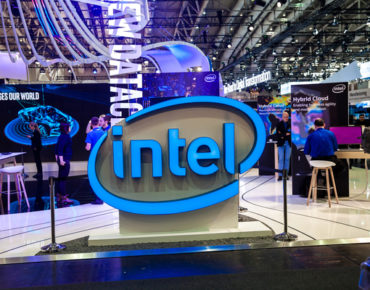Intel CEO Gelsinger Makes Exec Changes, Revamps AI and Data Center, Network and Edge Groups

Four months after taking over the reins of Intel Corp., CEO Pat Gelsinger has announced a string of executive leadership changes as he works to shake things up inside a company that leads its marketplace but could use a boost in energy.
The executive changes, unveiled on June 22 (Tuesday), include the promotions of two existing Intel execs, Sandra Rivera and Raja Koduri, and the hiring of two tech industry veterans, Nick McKeown and Greg Lavender, who will join the company in new roles. As part of the reshuffling, Gelsinger also announced related changes to Intel’s former Data Platforms Group (DPG), which is being restructured into two new business units, the Software and Advanced Technology Group and the Accelerated Computing Systems and Graphics Group.
The odd man out in all the job changes at Intel is Navin Shenoy, the executive vice president and general manager of the Data Platforms Group (DPG). Shenoy has spent about 26 years at Intel, including previously running the client computing group and Intel Asia Pacific, according to the company. Shenoy is leaving the company on July 6 after assisting in the transition.
Under Gelsinger’s directives, Rivera, the company’s chief people officer since 2019, will take on a new role as executive vice president and general manager of data center and AI, including leading the development of data center products such as Intel Xeon chips and field programmable gate array (FPGA) products, as well as driving the company’s overall AI strategy. Rivera has worked for Intel for almost 21 years, including as the leader of Intel’s network platforms group.
Koduri, who previously served as Intel’s general manager of architecture, graphics and software, is an innovator in GPU computing technology and will now lead the new Accelerated Computing Systems and Graphics Group. Focusing on high performance computing (HPC) and graphics, the new unit is chartered with delivering HPC and graphics products for customers across client, enterprise and data center markets.
In the other moves, McKeown will join Intel full-time on July 6 as senior vice president and general manager of a new network and edge group, while Lavender has joined the company as its new chief technology officer and senior vice president and general manager of a new Software and Advanced Technology Group.
McKeown, the recipient of the 2021 IEEE Alexander Graham Bell Medal, was previously a part-time Intel Senior Fellow who joined the company through the 2019 acquisition of Barefoot Networks, which he co-founded.
In his new roles, Lavender will drive Intel’s software vision and its technical innovation and research programs, including Intel Labs, according to the company. Lavender has more than 35 years of experience in software and hardware product engineering and advanced research and development, including his most recent job as senior vice president and CTO of VMware. He has also held key leadership roles at Citigroup, Cisco and Sun Microsystems.
The Intel Network Platforms Group, Internet of Things Group and Connectivity Group are also all being brought into a single business unit, the Network and Edge Group, under Gelsinger’s changes.
Gelsinger Steers a New Course
Rivera, McKeown, Lavender and Koduri will all report directly to Gelsinger, who returned to Intel in February after serving for 11 years as the CEO of VMware. Gelsinger had previously worked at Intel for 30 years before leaving for VMware in 2009. His departure from Intel came after he was reportedly denied a path to the Intel CEO’s job after his long first tenure.
“Since re-joining Intel, I have been impressed with the depth of talent and incredible innovation throughout the company, but we must move faster to fulfill our ambitions,” Gelsinger said in a statement. “By putting Sandra, Raja, Nick and Greg – with their decades of technology expertise – at the forefront of some of our most essential work, we will sharpen our focus and execution, accelerate innovation, and unleash the deep well of talent across the company.”
In a company-only memo to Intel employees, Gelsinger elaborated about his executive changes, according to a story by CRN, which was able to review a copy of the memo.
Rivera has a “deep history in data center technology and a proven track record of integrating Intel’s silicon and software portfolio to create greater customer value,” Gelsinger wrote in his memo, the CRN report states. “Her transformational leadership will help us develop undisputed leadership data center products for a cloud-based world and define and deliver a cross-Intel AI strategy.”
Gelsinger explained in his memo that the changes to the Data Platform Group and the formation of the two new business units were done to allow Intel to “move faster” in regaining technology leadership, CRN reported. “I am confident these changes will help us accelerate our pace, as they fully align our organization against our priorities: one clear voice to the customer, distinct business units focused on leadership products, four functional organizations to ensure flawless execution and ongoing innovation, and the horizontal support organizations needed to fuel our strategy and culture for today and the future,” the memo continued.
The Accelerated Computing Systems and Graphics Group will consist of multiple teams, including the company’s HPC team. The HPC team, which was previously under the Data Platform Group, will be led by HPC veteran Patricia Damkroger, Gelsinger’s memo stated.
Analyst Views on the Moves
Several IT analysts told EnterpriseAI that Gelsinger’s executive changes, coming just a few months after his own return, are not a surprise.
“In part, Pat Gelsinger was named CEO to bring a new point of view to Intel and shake the company out of its complacency,” said Charles King, the principal analyst with Pund-IT. “To achieve that, he needs to employ a management team who share his strategic mindset and support his plans for moving the company forward.”
The promotion and hiring of Rivera and McKeown respectively are “well-deserved, and they have the crucial skills needed to manage two of Intel's most important organizations,” said King. “The new business units address areas that are vital to Intel's future success. Both Lavender and Koduri are deeply experienced and respected in their fields. Bringing them onboard is a coup for Gelsinger.”
Another analyst, Glenn O’Donnell of Forrester Research, said that it is a given that executive changes will come when anew CEO arrives inside a company.
“I like that he is highlighting some categories where Intel has taken some hits from the competition,” said O’Donnell. “Most notable are the GPU, networking and FPGA businesses. Intel has been in all these businesses for years, but this raises the profile of these product lines. They will get more attention from Gelsinger and the market as a result.”
Shenoy’s departure is certainly not a surprise, O’Donnell continued. “One can mainly just speculate on the inner workings at Intel here, but Shenoy led the main business that has suffered in recent years. While you cannot blame one person, you need not be a clairvoyant to see why a change was needed there.”
The changes made by Gelsinger so far show that he is delivering on what he promised – bringing new ideas and directions – said O’Donnell. “He knows he has a tough job ahead of him. To pull off a turnaround for Intel, he needs to make some bold moves, many of which will be unpopular with some of his people.”
Nathan Brookwood, a research fellow with Insight 64, said that the writing was on the wall for Shenoy.
“Since Shenoy's time at DPG, AMD has gained share in the server market, and even ARM is gaining a foothold,” Brookwood told EnterpriseAI. “Intel's share loss is primarily due to its inability to get its 10nm server line, known as Ice Lake on a timely basis.”
The suddenness of Shenoy’s departure suggests the move was not in his long term plans, said Brookwood. “Navin was running the client business until 2017. He did not move into DPG until 2019. I think Intel is throwing him under the bus.”
Gelsinger’s Return
Gelsinger succeeded Bob Swan at Intel when he returned in February, tasked with the job of reinvigorating the monolithic company and breathing new energy and life into its organization, products and leadership. Gelsinger’s hiring came after activist hedge fund Third Point had urged Intel’s board to explore “strategic alternatives” after manufacturing setbacks plagued the company and resulted in a two-to-three year lag in process leadership.
Intel’s plans for its 7-nanometer nodes are overdue, with delays until late 2022 or early 2023 that will place the company several years behind its Asian peers for at least the first half of this decade. This lag in advanced semiconductor manufacturing is a vulnerability that must be corrected, the hedge fund had complained.
Gelsinger initiated his return to Intel by launching an ambitious plan to restore leadership manufacturing performance, called IDM 2.0. Described as a major evolution of the chip company’s integrated device manufacturing (IDM) model, IDM 2.0 represents the combination of three factors: 1) Intel’s internal factory network; 2) the expansion of Intel’s use of third-party foundry capacity across its portfolio and 3) the launch of Intel Foundry Services.















